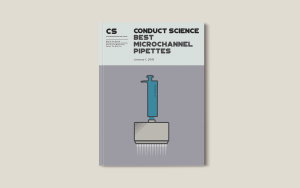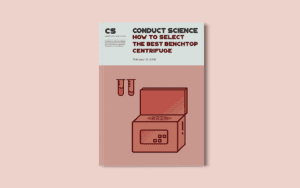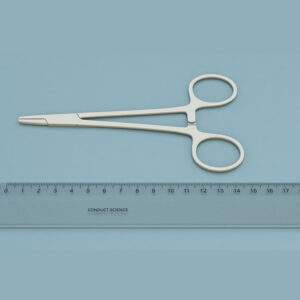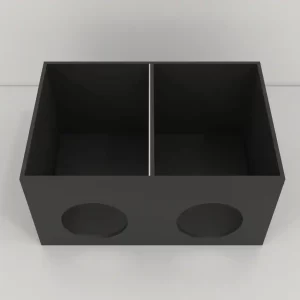
Best Microchannel Pipettes: A Comprehensive Guide
Introduction Pipetting, at first glance, would seem a fairly simple and easy task. Essentially described as glass or plastic tubes used to measure and transfer

The research design and methods are considered at the heart of every research project. It has the largest impact score during the peer-reviewing process. The National Institutes of Health (NIH) grant reviewers judge the training grants (F & K grants) based on the skillful performance of the proposed research, while the independent research grants (R grants) are scrutinized on the likelihood of achieving the specific aims of the research project. It is, therefore, important to understand the basics of research methodology and the skill of transforming it into the grant proposal form.
For any research, the study design and methods used are the most integral part. They weave the whole research in a delicate supporting framework. This part is also known as the blueprints of your research. Your aim here is to compel the reviewers that you have the guts to tackle the proposed research question via your chosen designs of study (Sudheesh, Devika & Nethra, 2016). Your research methodology section demonstrates your technical capabilities and skills to reach your claimed specific aims.
The primary determinant of your study methods is your research question and aims. There are two main types of study designs and approaches. You have to choose from one of them to fulfill your research aims. These approaches include:
It is a non-interventional type of study design where you just have to observe your research subjects. This study method has four variations, these are:
Case-series studies
These studies do not involve a control group. Instead, a small group of patients is chosen for observation. These subjects are experiencing some bizarre signs and symptoms, usually after vaccinations. For example, patients that are experiencing febrile seizures two weeks after having been vaccinated for mumps are gathered together as subjects and are observed for a long period to form a hypothesis.
Cross-sectional studies
In this type of study, the subject’s existing condition is observed for a short period, and the data is noted. It is very beneficial for planning and improving healthcare. It can help calibrate the potential risk factors and their outcomes in a particular population. For example, studying the probable risk factors for respiratory diseases in a population and forming its hypothesis.
Case-control studies
This type of study deals with both the disease and control groups. It evaluates a disease concerning various risk factors.
Cohort studies
It evaluates various effects of a single risk factor on the healthy subjects after exposure. These subjects are observed onwards for any changes in their health. Hence, it is also known as a prospective study. It is usually a high-budget study with a longer time duration.
This is the second main study design and is also known as interventional studies. It contains fewer chances of bias as compared to the observational studies because more environmental constraints are there. An example of such type of study is the randomized controlled trial. (Ahmed & Abdullah, 2017)
The designs and sources to conduct your research are to be elaborated here while quoting important and relevant citations. This core section has many compositional elements. Following are the elements that make this section:
The sample population is the subset of your selected population that falls into your inclusion criteria of research. Thus, the criteria for both inclusion and exclusion are to be defined clearly.
The data collection methods are important elements in research methodology. Attach the copies, if you plan to conduct your research via surveys, questionnaires, and interviews.
This is another essential element of this section. It signifies the strength of your project, along with validity and relevance. The greater the accuracy of your research data and selected designs, the higher the chance of getting the attention of your peer reviewers.
It refers to the neutrality in your research methods and data collection. Pointing out the bias factors and neutralizing them will make your research more authentic, consistent, and applicable to the peer reviewers.
It is the evaluation of data collected and requires data reconstruction. Elaboration of methods of decoding and collecting of data is to be done here. This element will make use of suitable software and a statistician with their specified names.
This section of your grant application should not exceed 10 pages and should include the following sub-sections:
Your research design sub-section is the pivot point of your research methodology. Here, you should come forward with your chosen research design. This can be any of the above-mentioned types. Then, you have to link this claimed research design to the aims of your research. You will relate how important is this selected method of research to achieve the objectives of your proposed research.
The next sub-section will elaborate on the selection criteria of your research subjects. You should answer these questions to script this segment:
The third sub-section describes the sample size. Several computer spreadsheets are available nowadays that aid in the calculation of the research sample size. With their help, you propose the selected sample size from your study population. You will clarify how your sample size is adequate to achieve your research aims. You will convince your reviewers that your sample size is neutral and valid with the potential to reproduce the research results.
This sub-section is needed when your study design is an experimental type. Intervention study designs are the ones that prove that certain interventions will produce the desired outcome. The interventions can be drugs, medications, behavioral therapy, or devices. For example, if you have chosen a drug as an intervention, then you will specify its name, ingredients, dose, frequency, and duration of administration. You will also mention the responsible person for conducting this intervention. Hence, a thorough explanation of your interventional procedures is provided here.
This sub-section gives information about the tools to be used for your research data collection purpose. These include medical records, surveys, questionnaires, interviews, and laboratory tests (Al-Jundi & Salah, 2016). You will provide all the details about the laboratory tests and the procedures for screening used in your research. You will prove the validity and reliability of all the instruments used for the collection of data by providing references related to the same procedures and tools used in the previous literature.
In this sub-section, you will elaborate on the methods and protocols by which you will collect the data for your proposed research. For example, if your study concerns the blood glucose level measurement, you will note the arrival time of your subject, his rest time, his study environment, the study equipment used, his posture while measuring his glucose level, the frequency of the measurements taken, the site from which the measurement sample was taken from the subject and the person doing these procedures. This will reduce the chances of bias and errors.
Here, you will define the plans for interpreting the collected data. You will elaborate on the procedures that will deal with the missing data and unused data. The particulars for good clinical practice are garnished in this sub-section. You will specify all the issues relating to logistics in a detailed manner. An immature analytical approach will not be supported by peer reviewers (Michael et al., 2019). Hence, your analysis sub-section should be strong and impactful. Also, address the steps to ensure quality control for the analysis of data.
It is the last sub-section of the research methodology section. Here, you will remind your peer reviewers that how important your chosen research design is for reaching the specified aims. You should elaborate on the benefits that your research will provide to the healthcare system and the stakeholders. Also, justify the voids it will fill in the literature. Another point to mention will be your planning to distribute your research findings with other professional researchers (Asya, 2008)
Esthetics serves as a pearl when added anywhere. It is important to make your application esthetically presentable to add charm to it. The points that are to be kept in mind for better esthetics of this section are:
Try to adopt a frequent paragraphing method. It will help you to create greater esthetics. Your reviewers will lose interest if you write long paragraphs. Hence, every paragraph should consist of 5 to 6 lines. Furthermore, every paragraph should have a short heading portraying the theme of your discussion in it.
Using simple charts and tabulations in your data collection and analysis sub-sections will impress your reviewers. It will be easy for them to collect and comprehend the information about your proposed research. Complicated diagrammatic representations should be avoided at all costs.
Organizational skills are very important while writing any grant proposal. Your points should have a linking flow with each other. It will make your writing aesthetically appealing and to the point
To conclude, the research design and methods of a grant require full focus, attention, and hard work. Funding agencies prefer quantitative researches as compared to qualitative ones. This shows how important the facts and figures are in your grant writing. You will be able to get a fair enough idea about planning and writing this core section of your grant proposal by exclusively following the guidelines given in this article. In the end, your hard work will indeed pay off in the form of a research grant award.

Introduction Pipetting, at first glance, would seem a fairly simple and easy task. Essentially described as glass or plastic tubes used to measure and transfer

Resource Identification Initiative: A Key to Scientific Success and Analytics The key to success can be found in the essential principles of the Resource Identification

INTRODUCTION AND BRIEF HISTORY One of the most important pieces of equipment in the laboratory is the centrifuge, which facilitates the separation of samples of

INTRODUCTION AND BRIEF HISTORY One of the most important pieces of equipment in the laboratory is the centrifuge, which facilitates the separation of samples of






DISCLAIMER: ConductScience and affiliate products are NOT designed for human consumption, testing, or clinical utilization. They are designed for pre-clinical utilization only. Customers purchasing apparatus for the purposes of scientific research or veterinary care affirm adherence to applicable regulatory bodies for the country in which their research or care is conducted.